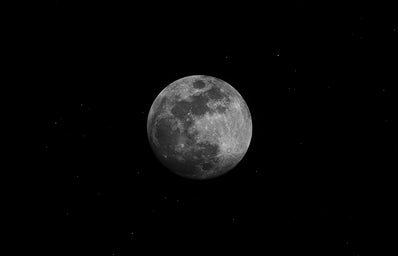The moon is one of the brightest objects observed on Earth, only second to the Sun. It is such a staple in our night sky, and not only because of its prominence: it remains captivating because of its effect on tides, its phases, eclipses, and general beauty. And yet while our moon is the most familiar to us, there are over 200 moons orbiting different planets in our solar system, many of which are considerably more interesting than what ours has to offer.
1. Enceladus
I start with Saturn’s moon Enceladus because it is my personal favorite. Beneath its icy surface, there is an ocean, from which icy gaseous and dust materials spray into space via geysers. Because of the jets propelled by these geysers, we’ve learned about the composition of the ocean within, which contains many of the chemical properties required for life to form.
2. Io
Speaking of active explosions, Io (pronounced “eye-oh”) holds the title for “most volcanically active” of the moons in our solar system. Because of its position in correlation with Jupiter and two of Jupiter’s other moons, Io is constantly at gravitational war with these other bodies. This “tug-of-war,” as it is often described, causes extreme internal heating. This creates an active, volatile surface with eruptions so big that we can observe them on Earth, with ground-based telescopes.
3. Ganymede
Planets aren’t only determined because of their size. If they were, Ganymede would be a candidate, given that it is larger than Mercury and sits as the largest moon in our solar system. Even more impressive, it is the only moon in our solar system with an observed magnetic field and therefore with aurorae.
4. Europa
Jupiter’s ocean moon Europa has worked its way into pop culture because of the possibility of life in the liquid ocean below its icy surface. Europa harbors a massive ocean that is suspected to hold twice the total amount of water on Earth. We are able to learn more about it when the gravitational pull of other nearby bodies cracks the icy surface, allowing water to fill in the gaps and freeze to take its place.
5. Callisto
The dark surface of Callisto is covered by light-colored speckles, holding the unique title of being the most cratered body in the solar system. It is believed that the spots are primarily composed of ice and that the dark surrounding surface is ice worn down by erosion. There is also the possibility of a salty ocean deep below the surface.
6. Titan
Without context, Saturn’s largest moon looks unsuspecting, presenting itself as a smooth, mustard-covered body. However, closer investigation of Titan’s surface reveals extensive lakes, seas, and rivers. Unlike the liquid water that covers Earth, Titan’s oceans are composed of liquid hydrocarbons. Titan is therefore the only other confirmed planet or moon in the solar system with liquids on the surface, aside from Earth.
7. Mimas
In the first Star Wars movie, Luke Skywalker mistakes the Death Star for a small moon. Obi Wan Kenobi then responds, “that’s no moon; it’s a space station.” Because of the large crater on Mimas, its appearance resembles that of the famous Death Star. To this observation, I would flip the saying and point out that this is no space station; it’s a moon. This frozen moon is covered in impact craters of all sizes, giving it a unique appearance.
8. Hyperion
When I first saw an image of Saturn’s moon Hyperion, I thought it looked like a sponge potato. Very scientific of me, I know. Personally, I think Hyperion is one of the weirdest moons in the solar system, which also makes it one of the most fascinating. It gets its strange appearance from both its oblong, potato shape – given that it’s thought to be the remains of a since-destroyed, larger moon – and from its unusually deep craters, which give it a spongy look.
9. Triton
Neptune’s largest moon, Triton, is definitely the rebel of the group. Out of the large moons in the solar system, Triton is the only one that orbits in the direction opposite that of the planet it orbits. In other words, it has a retrograde orbit. Given its distance from the Sun, Triton is one of the coldest objects in our solar system, making it extra “cool.”
10. Our moon
While it may not have active volcanoes or liquid oceans, our own moon has some interesting details of its own. Because it is so close to us, we know the most about it, giving us deep insights into its past. For example, it is believed that the moon was formed when a baby planet – called a protoplanet – crashed into Earth during its early stages of formation. The moon was what remained.
It’s easy to adore the moon for its many beautiful qualities without even realizing that there are so many more out there that are incredible for their own unique (and sometimes weird) features. But even knowing what other moons are like, I would still keep ours. After all, I couldn’t imagine the sky without it… And honestly, I don’t want to.
To learn more about the various moons in our solar system, visit: https://solarsystem.nasa.gov/moons/overview/


